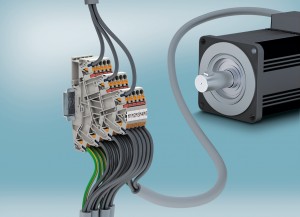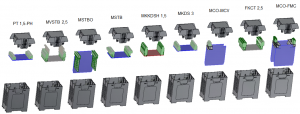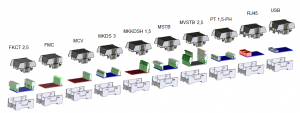Think you know a lot about Phoenix Contact? Maybe you do, or maybe you don’t. Here I would like to shed some light on the first thing you should know about Phoenix Contact.
The birth of Terminal Blocks

Phoenix Contact was founded in 1923 in Essen, Germany.
The world’s first modular terminal block was developed by Phoenix Contact in 1928.
The birth of the terminal block occurred while working with the Rhine-Westphalia Electricity Works (RWE). This led to the development of today’s align-able terminal blocks mounted onto din rails.
As terminal block innovation is the soul of our company, Phoenix Contact never fails our customers with new terminal block innovations until today.
Evolution of Phoenix Contact Terminal blocks
In the early 1950s, our company went into re-engineering and upgrading the RWE terminals. A new generation of Phoenix Terminal series was born, and this proved to be an all-time game changer for us.
1956 was the year that Feedthrough & Disconnect Terminal blocks were developed along with the pioneer of Clipline Complete.
Phoenix Contact never stops developing innovative ideas and solutions for the market.
From the 1970’s onwards, we once again relooked into developing the different connection methodologies for Terminal blocks.
In the year 1978, we developed the ST “Spring Push-in” technology into modular terminal blocks. We created the first modular terminal block with a direct plug-in spring connection, designed to offer installation engineers an easy and safe conductor connection method.
Nearing the late 1980’s, QTC fast connection terminal blocks were developed and added into the Clipline Complete range. This design of connection can save up to 60 percent of the time required for wiring, and it is no longer necessary to strip the wire protection.
2009 is the year we proudly introduced our new PT – Push-in terminal block in a new series with a new design: the integrated push button. PT terminal blocks not only increased the safety standards required; it also allows easy conductor removal with no special tools required.

As a pioneer in electrical connection technology, Phoenix Contact offers Clipline Complete – a comprehensive terminal block system with an extensive range of accessories for industrial control cabinet wiring.
In spite of our universal range of applications, there are regional limitations to consider where acceptance is concerned. With this in mind, Phoenix Contact has closely studied the requirements of current and potential customers in Southeast Asian markets.
In the year 2015, BT Barrier Terminal blocks were developed and integrated into our Clipline complete. This is where a cultural aspect comes into play – and not just in Japan but also across much of Asia, most particularly Southeast Asia: the importance of tradition, customs, and the approach to decision making.

With our ever growing Clipline Complete range of Terminal blocks, we have the different connection technologies available for each application and the answers to all your market requests.
There are many more things to find out about Phoenix Contact and if you are interested to know more, please feel free to contact us!
























